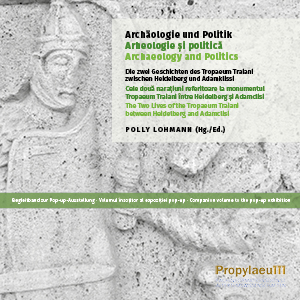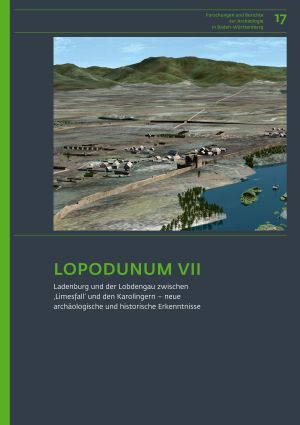Witschel, Christian
Archäologie und Politik: Die zwei Geschichten des Tropaeum Traiani zwischen Heidelberg und Adamklissi
One Monument, Two Stories Who owns cultural heritage, and what does cultural heritage mean to us?
These questions are closely linked with claims of ownership and historical narratives for which archaeology has often been appropriated. The Tropaeum Traiani in Adamclisi, Romania is a striking example of the historical intertwining of archaeology and politics. The pop-up exhibition and this volume tell the two stories of the same monument: the original in Romania and its copies in Heidelberg. Over the course of the 20th century, the monument was differently received and politically instrumentalised. Periods such as the First World War, communist Romania, and the 1968 movement in Germany are highlighted as political contexts which affected the ancient cultural heritage.
LOPODVNVM VII: Ladenburg und der Lobdengau zwischen ‚Limesfall‘ und den Karolingern
The town of Ladenburg looks back on a rich historical heritage: In the Roman era, Lopodunum was the capital of an extensive municipality, the civitas Ulpia Sueborum Nicrensium, and from the Carolingian period onward, Lobedtenburc is documented as the center of the Lobdengau. For the period in between, written sources are largely missing; all the more important are archaeological features and finds. The most important of these are presented in the volume at hand and embedded in the historical context. For instance, a group of Postumus coins from Ladenburg are presented, new interpretations of the late Roman burgus and the medieval ‘bishop's court’ are discussed, and recent findings on a Carolingian cemetery in the city area are presented. The surroundings of Ladenburg are represented by overviews on the richly equipped early medieval cemeteries of the region and on recent settlement excavations. Critical re-evaluations of written sources as well as historical-archaeological syntheses on the various possible scenarios of the 'Fall of the Limes' and on comparative regions such as the Palatinate in Late Antiquity complete the volume.








